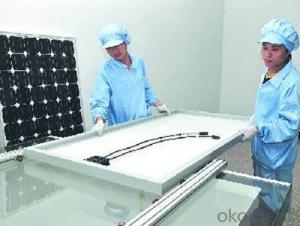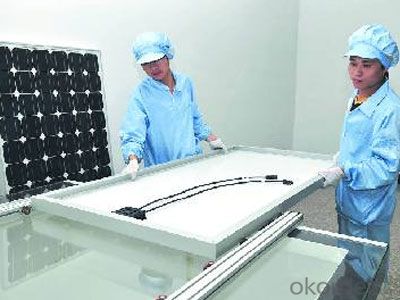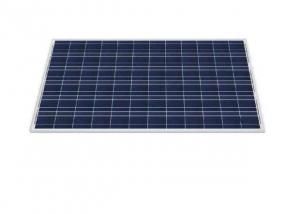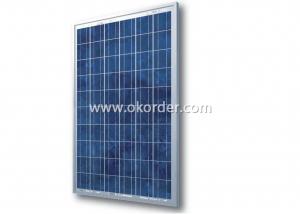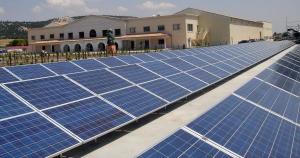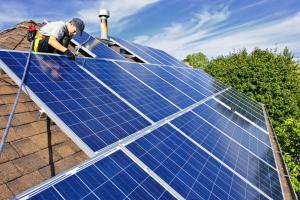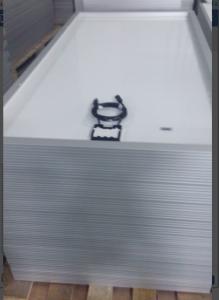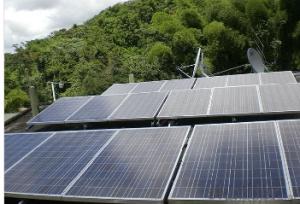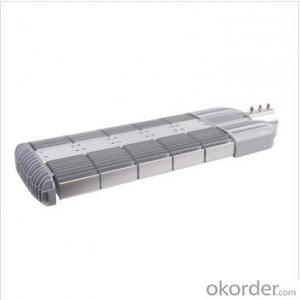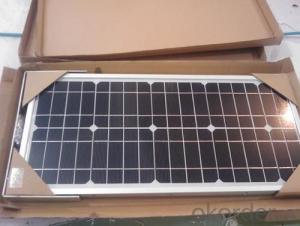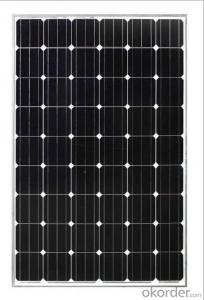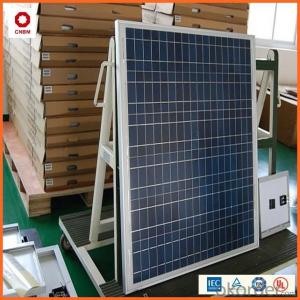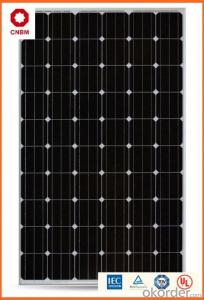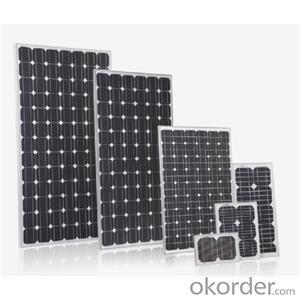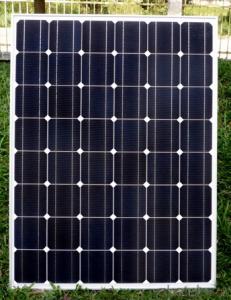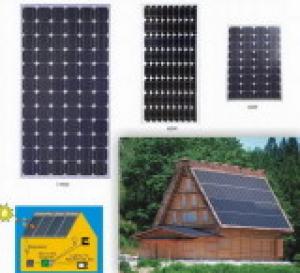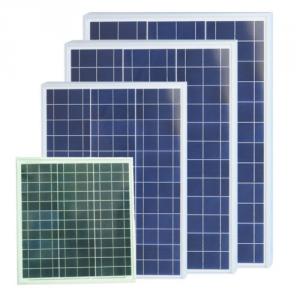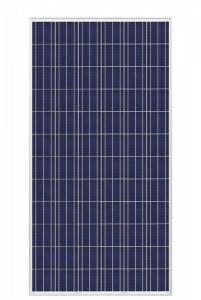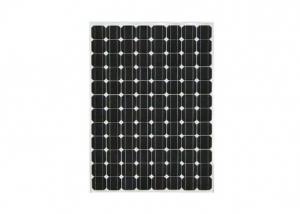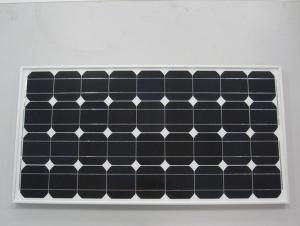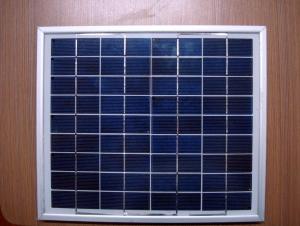High-Efficiency Hexagonal Solar Panels 180~200W Mono晶 Solar Module with CE, RoHS, TUV, UL, ISO9001
- Loading Port:
- China main port
- Payment Terms:
- TT OR LC
- Min Order Qty:
- 1 pc
- Supply Capability:
- 10000000 pc/month
OKorder Service Pledge
Quality Product, Order Online Tracking, Timely Delivery
OKorder Financial Service
Credit Rating, Credit Services, Credit Purchasing
You Might Also Like
Quick Details
| Place of Origin: | Guangdong China (Mainland) | Brand Name: | sunny energy | Model Number: | SEM-200W-P |
| Material: | Polycrystalline Silicon | Size: | 1482*992*50mm | Number of Cells: | 6*12pcs |
| Max. Power: | 215W | certificate: | IEC,CSA,MCS | weight: | 24.5kg |
| lifespan: | 25years | cell: | Motech | leadtime: | 15~25days |
| sample: | available |
Packaging & Delivery
| Packaging Detail: | 2pcs in one carton,and we could also package as your request.. |
| Delivery Detail: | 25days |
Specifications
solar module:
1)High quality & efficiency
2)CSA/IEC/CEC certificate
3)Pm is notless than 90% in 10 yrs
and 80% in 20 yrs
high efficiency 200w poly solar module
| Characteristics | SEM-190PB205 | SEM-195PB205 | SEM-200PB205 | SEM-210PB205 | SEM-215PB205 |
| Maximum power(Pm) | 190.0W | 195.0W | 200.0W | 210.0W | 215.0W |
| Power Tolerance | ±3% | ±3% | ±3% | ±3% | ±3% |
| Voltage at max power(Vmp) | 34.9V | 34.9V | 34.9V | 34.9V | 34.9V |
| Current at max power(Imp) | 5.44A | 5.58A | 5.73A | 6.02A | 6.16A |
| Open circuit Voltage(Voc) | 43.2V | 43.2V | 43.2V | 43.2V | 43.2V |
| Short circuit current(Isc) | 5.98A | 6.15A | 6.3A | 6.62A | 6.78A |
| Operating Temperature | -40°Cto+85°C | -40°Cto+85°C | -40°Cto+85°C | -40°Cto+85°C | -40°Cto+85°C |
| Maximum System Voltage | 1000V | 1000V | 1000V | 1000V | 1000V |
| Maximum series Fuse Rating | 15A | 15A | 15A | 15A | 15A |
| Standard Test Condition | Irradiance 1000W/sqm,Module temperature 25°C,AM=1.5 | ||||
| Mechanical Characteristics | |||||
| Solar cell:Polycrystalline silicon solar cell 156×156mm(6inch) | |||||
| No.ofcells and connections:72=6×12pcs | |||||
| Dimension of module:1482×992×50mm(58.3×39×2inch) | |||||
| Weight:24.50kg | |||||
| Junction Box:Ip65 rated | |||||
| Packing Configuration:2Pcs/CTN,1510×1020×120mm(59.5×40.1×4.7inch) | |||||
| Warranty: Pm is not less than 90% in 10 years and 80% in 25 years | |||||
| Resistances:227g stell ball fall down from 1m height and 60m/s wind | |||||
| Temperature Coefficients | |||||
| Noct:48°C±2°C | |||||
| Current temperature coefficient:0.06±0.01%/K | |||||
| Voltage temperature coefficient:-(78±10)MV/K | |||||
| Power temperature coefficient:-(0.5±0.05)%/K | |||||
| IEC 61215 ed.2, IEC61730 and UL-1703 | |||||
- Q: I am confused. I am planning to build a simple 2Watt solar system to power some lights in my house. . I wonder if it is possible to power up a 2Watt bulb using 2Watt solar power?2. Normally, when we are reading the power rating of a bulb, we will read the wattage, so what about the voltage and current rating?3. If the current is insufficient, will the bulb light up?I am having a solar panel that can output 2W power but I am not sure about the output voltage, how can I find out about the current? I am getting really confused.
- Unlikely - at least not a full brightness. You have to match voltages. If your panel is 2v at amp, it won't run a 20v bulb that runs at /0 amp. You're also going to lose power in the wiring and other components that means the 2w panel won't really deliver its full rating. And I'm also guessing that the 2w of the panel is only under full, bright sunlight, so any lessening of the light; clouds, haze, fog, dust, will lessen the power available.
- Q: What is the average payback period for solar panels?
- The average payback period for solar panels typically ranges from 5 to 10 years, depending on various factors such as the initial cost of installation, local electricity rates, available incentives, and the amount of sunlight received in the area.
- Q: Ok so i can have a problem i have two 5 watt 2 volt solar panels a 2 volt battery and a 400 watt ac 2 volt dc inverter i believe im only getting 5 watts from from my solar panels thats the equivalent of one is there any way i could get full voltage from my solar panels without theoretically burning my wallet.. please help
- I think you need to take some basic courses on electricity. Usually, 8 volt solar panels are required to charge 2 volt batteries. The voltages of photovoltaic cells are set by the material they are made of, only current changes. If you hook up a 2 V solar panel to a 2 V battery, no current will flow, nothing would get charged. You would need some elaborate DC to DC voltage converters to charge a 2 V battery from 2 V solar panels. Solar panels can be connected in parallel or in series, as you've made the mistake of buying 2 V solar panel, you would have to wire them in series and have a charge controller that could limit the voltage of the charge. Did it ever occur to you that two 5 watt solar panels would not be able to provide the power needed by a 400 watt inverter? You're just running off your battery with your set up. Solar power is expensive power, you can not have solar without burning a hole in your wallet.
- Q: How do solar panels impact the aesthetics of a building?
- Solar panels can have both positive and negative impacts on the aesthetics of a building. While some may argue that solar panels can detract from the visual appeal of a structure, advancements in technology have made them more visually pleasing and integrated with the overall design. Additionally, the eco-friendly nature of solar panels can enhance the building's reputation and sustainability image, which can be seen as a positive aesthetic impact. Ultimately, the perception of how solar panels impact the aesthetics of a building may vary depending on personal preferences and the design of the installation.
- Q: Can solar panels be used to power a theme park?
- Yes, solar panels can be used to power a theme park. Solar energy is a renewable and sustainable source of power that can be harnessed to meet the energy needs of various establishments, including theme parks. By installing a sufficient number of solar panels, a theme park can generate enough electricity to power rides, lighting, and other facilities, while also reducing its carbon footprint and operating costs.
- Q: Are there any fire risks associated with solar panels?
- Yes, there are fire risks associated with solar panels, albeit they are extremely rare. These risks can occur due to factors such as faulty installation, damaged wiring, or issues with the electrical components. However, industry standards and regulations have significantly improved over time, ensuring safer installations. Additionally, regular maintenance and inspections can help mitigate these risks and ensure the safe operation of solar panel systems.
- Q: The average solar panel produces 0% of the energy that is put into it. What is happening to the other 90%? Is it being reflected or is it being obsorbed by materials that are not a part of the solar cell? Is it possible to one day have near 00% efficient solar cell technology?
- Unlikely that we gan get to near 00% efficiency, although there is room for improvement. In the meantime, don't pooh-pooh 0% efficiency. That's about the rate of energy transfer up a food pyramid, perhaps a little less at the solar to plant level. As this manages to provide the basis for most of life on earth, it's nothing to sneeze at. As far as the other 90% goes, I would guess that much of it is reflected.
- Q: i know that a solar panel of square meter generate 000 watts on a clear and sunny day, but i need to know the time rate. is it 000 watts per day or per hour? Thanks.
- This question was answered a few days ago. The Watt is the unit of of power, not the unit of energy. Energy is measured in Watt-Hours or Joules but not in Watts per unit time --- see the difference --- [] a Watt per hour v. [2] a Watt for an hour? The term, Watt per hour does not make any sense --- it is a bit like saying my car has 00 Horse Power per mile. You are right to say that the round figure for the power input of a solar panel is ,000 Watts per square metre, in the middle of the day when the sky is clear. Were the sun to shine for 0 hours per day in the summer, you could get as much as 7kWatt-Hours per day --- if you were very lucky. The roof area of a small house is no less then 50 square metres and this is more than big enough to supply all of you household energy needs but taking account of rainy days and taking account of the need to store the energy for night-time is an expensive problem, to satisfactorily overcome.
- Q: I have a solar panel 7.5V .25W 50mah, connect 2 in parallel to power a RC boat. The boat use to run on 6cell battery pack - 7.2V 800Mah.The dc motor requirement based on the provided battery pack, i assume would be 7.2V and rated at (7.2V * .8Amp) = 2.96 Watt.Would two of my solar panels run this DC motor ?are my calculations or understanding correct ?do lend a hand dear ''world''
- Wood? Steel tubing could be a lot lighter. Use the hardest narrowest tires you can find bicycle wheels and tires would work nicely and they can be had with really light disc breaks. As for a motor a golf cart motor is made to order. You can get an old electric golf cart and have almost all the parts you will need. Hell cover the roof of the cart with photo voltaic and have a ball. Note I stress weight savings as weight will cost you energy and with photos you won't have much to spare. You will need a battery pac of some sort lithium are a better choice than lead acid. there is a ton more to consider good luck with your project.
- Q: How do solar panels affect the property's overall cost savings?
- Solar panels can significantly impact a property's overall cost savings by reducing or eliminating electricity bills. As solar panels generate electricity from sunlight, they offset the need for grid power, resulting in lower energy expenses. Additionally, excess energy can be sold back to the grid, further increasing savings. While the initial investment for solar panels may be high, the long-term financial benefits and potential tax incentives make them a worthwhile addition to any property.
Send your message to us
High-Efficiency Hexagonal Solar Panels 180~200W Mono晶 Solar Module with CE, RoHS, TUV, UL, ISO9001
- Loading Port:
- China main port
- Payment Terms:
- TT OR LC
- Min Order Qty:
- 1 pc
- Supply Capability:
- 10000000 pc/month
OKorder Service Pledge
Quality Product, Order Online Tracking, Timely Delivery
OKorder Financial Service
Credit Rating, Credit Services, Credit Purchasing
Similar products
Hot products
Hot Searches
